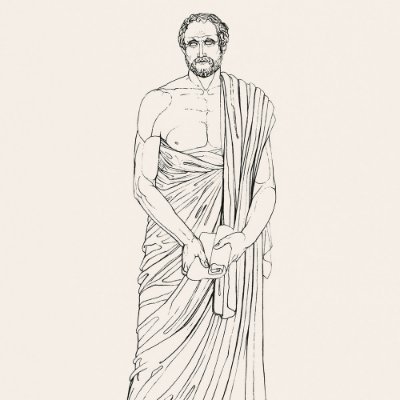One day, whilst enjoying his evening meal at a restaurant, Pablo Picasso—the world’s most influential artist at the time—got interrupted by a fan who handed over a napkin to him and said, “could you sketch something for me? I’ll pay you for it. Name your price.”
In response, Picasso pulled out a charcoal pencil from his pocket and swiftly sketched an image of a goat.
The man reached out to collect the napkin, but Picasso withheld it. “You owe me $100,000,” he said.
The man was outraged. “$100,000? Why? That took you no more than 30 seconds to draw!”
Picasso then crumpled up the napkin and stuffed it into his jacket pocket. “You are wrong,” he said.
“It took me 40 years.” 1
20 Years of Silence
“Every child is an artist. The problem is how to remain an artist once he grows up.” ―Pablo Picasso
From the age of five years old, Picasso drew compulsively. He drew on anything he could get his hands on, and sketched everything he saw.
On the day of his 19th birthday, Picasso left his family in Spain and immigrated to Paris, the art capital of Europe at the time.
The young Pablo Picasso could barely speak a word of French, had little money and lived in a small studio with penniless artists, who all worked hard to make a living from their art.
And for a short while, Picasso made some headway, until his close friend, Carlos Casagemas, committed suicide.
Traumatized by the death of his friend, Picasso began to create sombre paintings in only shades of blue and blue-green, which led to withdrawal of his art dealers support.
Left with little money to eat, Picasso conceded defeat, and returned home to Barcelona to live off his family. His father, Don José Ruiz y Blasco, reprimanded him for his failure and said that he had no chance of making a living as a painter.
One year later, however, Picasso mustered up the courage to leave home again and traveled back to Paris to have another shot at a career in painting.
This time Picasso would strike gold.
In November 1904, a wealthy American Heiress, Gertrude Stein, discovered Picasso’s artwork and bought 10 of his paintings for 800 francs. She also commissioned Picasso to paint an image of herself, which would later become the famous Portrait of Gertrude Stein.
By 1905, Picasso had become the favorite artist of the Stein family, and Gertrude Stein began to exhibit his paintings in her informal salon at her home in Paris.
In 1907, at the age of 25 years old, Picasso created his breakthrough painting, Les Demoiselles d’Avignon (The Young Ladies of Avignon): arguably the most important painting of the 20th century, which launched the cubism art movement and shaped modern art.
The rest is history.
By the time he passed away, Picasso was widely regarded as one of the greatest artists of all time, and amassed a net worth close to $500 million. 2
And in 2015, Picasso’s Les Femmes d’Alger (“Version O”), sold for $179.4 million, as one of the highest ever sold auctioned artwork.
To the naked eye, it may look like Picasso was an overnight success and a natural born creative genius, but his story would say otherwise: it took nearly 20 years for his hard work to payoff and the breakthrough moment of success to arrive.
There Are No Shortcuts to Success
“Only put off until tomorrow what you are willing to die having left undone.”
― Pablo Picasso
During his lifetime, Picasso produced an estimated 50,000 artworks: including 885 paintings, 1,228 sculptures, 2,880 ceramics, 12,000 drawings, and thousands of prints, tapestries and rugs. 3
Now consider this: In 1890, at the age of eight years old, Picasso created his first artwork, The Picador, and produced up to 50,000 artworks until he died at the age of 91 years old.
This means Picasso spent approximately 30,295 days working on his craft, and produced an average of one new piece of artwork each day.
By the time he produced the breakthrough painting, Les Demoiselles d’Avignon, Picasso would have spent nearly 20 years creating approximately 7,300 pieces of artwork.
This is an incredible volume of work by any standard, especially considering that Picasso had a natural talent in art and was considered to be a child prodigy in his youth.
Picasso’s story stands in stark contrast to the messages of instant results and overnight success pushed by the mass media.
It’s a humbling reminder that there are no secrets, magic pills or shortcuts to success in life and work.
And most importantly, Picasso’s story brings home the timeless ingredients of success: hard work, patience and consistency.
FOOTNOTES
1. Story as told in Creating the Vital Organization
2. So much so that no other artist has had more paintings stolen than Picasso. According to the Art Loss Register, in 2012, 1,147 of Picasso’s works had been listed as stolen.
3. Pablo Picasso: Spanish Painter Book by John Selfridge.
Mayo Oshin writes at MayoOshin.com, where he shares practical self-improvement ideas backed by proven science, philosophy and art, for better habits. To get these ideas to think and live better, you can join his free weekly newsletter here.
Originally published on mayooshin.com.
Follow us here and subscribe here for all the latest news on how you can keep Thriving.
Stay up to date or catch-up on all our podcasts with Arianna Huffington here.


